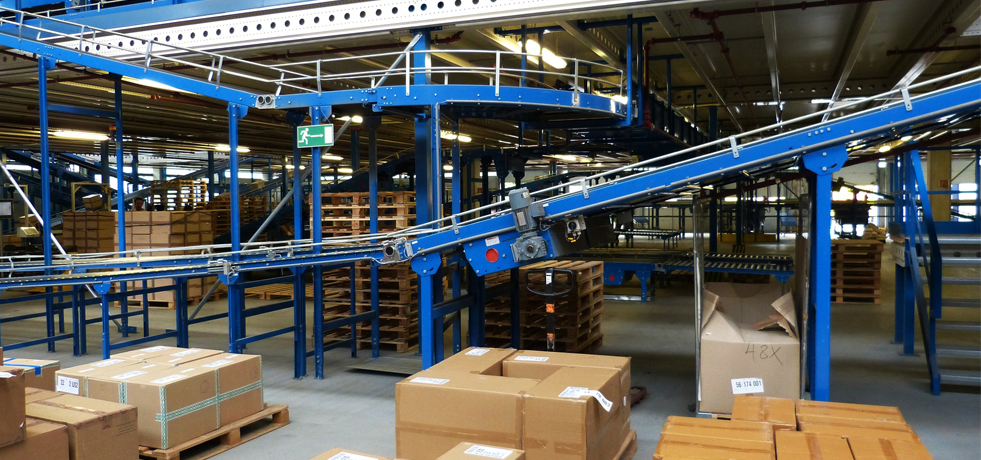As a supply chain professional, it’s likely that you think of warehouse automation in terms of reduced operating costs, quality and productivity improvements, waste elimination and manpower cuts.

However, for the sustainable supply chain, automation can help greatly in reducing environmental impact too.
Automated Warehouses and the Environment
As an example, consider a high-bay warehouse using an automated storage and retrieval system (AS/RS). The financial benefits are fairly obvious, because most of the warehouse activity is carried out autonomously, with little need for manual labour.
That aside, such a structure offers a number of advantages to the environmentally conscious company seeking to develop a sustainable supply chain.
These benefits include:
A smaller physical footprint than a conventional warehouse: By taking storage upwards, a high-bay warehouse requires less in the way of precious land and can have the same storage capacity as a conventional warehouse of twice its size.
Waste reduction, always a target for sustainable supply chain initiatives, is a given with automated warehouses. Here are some of the reasons why:
- Smooth and controlled pallet handling ensures damage to products (and pallets) is minimised
- Pallets do not need the same amount of plastic shrink wrap for protection as those handled manually
- Picking errors are minimised by warehouse automation, meaning less rework, which in turn results in less wasted energy use, transportation, associated emissions, and fossil fuel consumption
Reduced energy consumption means the sustainable supply chain with warehouse automation has a smaller carbon footprint.
An AS/RS can operate in the dark, so there is no need for bright warehouse lighting. Automated warehouses don’t need forklift trucks or any other equipment powered by internal combustion engines (although there may be some need for these in the yard outside).
Of course, energy is required to power the AS/RS in a high bay warehouse, but today’s systems are controlled by intelligent WMS platforms which optimise workflows to reduce energy use. The automated cranes are designed to run economically, with features such as regenerative braking, which capture and use excess energy to help power the equipment.
Other Advantages of Warehouse Automation
While it may not be good news for everyone, warehouse automation also reduces the manpower requirement attached to product receipt, storage and dispatch. Fewer workers travel to and from the warehouse every day, easing the environmental impact of public and personal transportation.
A smaller workforce helps to reduce site footprint even further, as there is no need for large employee parking areas, canteen rooms, or other facilities required for the larger workforce of a non-automated distribution site. Automated warehouse equipment has no use for paper documents either, so that’s another saving in natural resources.
The Sustainable Supply Chain with Extra Benefits
Although warehouse automation requires substantial investment initially, the same is true of many environmental, financial, or performance improvement initiatives.
Unlike some other initiatives though, automated warehousing can actually deliver returns across multiple facets of supply chain operation; contributing to sustainability, saving operating costs, and improving service and efficiency.
If conversations in your company turn to the topic of sustainable supply chain development therefore, there are plenty of reasons to put in a good word for warehouse automation. This is especially true if those conversations come at a time when capacity increases are also on the agenda.


Very informative article! As far as the environment is concerned, we should make use of resources in the most efficient way so as to save the environment for the future! According to the survey, worldwide use of paper has risen by 400% in the last 4 years. This percentage is increasing at a rapid rate. Making 1 tonne of paper emits more than 1.5 tons of CO2 equivalent. Whereas many warehouses still support paper-based picking which not only harms the environment but is also facing difficulties to fulfill the rising demands of e-commerce, which leads to low productivity and less efficiency of the whole value chain.
As an era of development and Industry4.0, picking methods in various to has been upgraded in which one of them is, Vision picking technology which is now built on augmented reality. AR technology combines computer-generated assets with real-world warehouse environments, thus providing the operator with valuable insights that help to optimize the supply chain operations. Collaborating with this technology helps to reduce carbon footprints and support different types of picking such as batch picking and zone picking in the warehouse.
Thanks! I’m glad you found it useful.